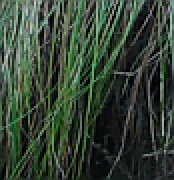Original
Left: sharpened. Right: too much sharpening.
An image looks sharp when it gives a suggestion of detail. Most often used is sharpening, but there are other things that make an image look sharper.
EXAMPLE
Original
Left: sharpened. Right: too much sharpening.
If you use an anti-aliasing algorithm to shrink your images, you will find that the resulting images may look a bit soft in comparison with no anti-aliasing. Then sharpening can quite effectively compensate for the soft look. I typically use a standard sharpening setting to sharpen shrunk images. The end result of antialiasing + sharpening is, as far as I am concerned, better than having aliasing noise `sharpen' your picture.
EXAMPLE.
Original



Shrunk images. These images were shrunk by a factor 0.45, then zoomed by a
factor 2 to
show detail. From left to right: no anti-aliasing, anti-aliasing,
anti-aliasing + sharpening. As you can see,the non-anti-aliased image looks
sharper than the anti-aliased one. But the image also nicely illustrates
aliasing problems: some of the blades of grass become discontinous, with gaps
in them. The anti-aliased version does not have this problem. The final
image shows how sharpening may make the anti-aliased image look as sharp as
the non-anti-aliased one, but without the aliasing problems.
Convolution sharpening means running a convolution matrix over an image. This means that each pixel in the destination image depends linearly on the corresponding pixel in the source image and a number of neighbours. Very easy to understand is convolution blur, which just averages neighbouring pixels to obtain a blurred image. Mathematically, convolution sharpening is exactly the reverse of convolution blurring, that is, subtracting the values of neighbouring pixels from each pixel in an image.
Unsharp mask sharpening works by subtracting a blurred version of an image from that image, and then renormalising for brightness. It is originally known as a darkroom technique rather than a digital image processing technique. Its effectiveness depends on the blurring algorithm that was used to obtain the blurred image. If a convolution blur was used, the unsharp mask is the same as a convolution sharpen. In unsharp mask sharpening, one usually specifies a radius, which stands for the radius of the blur effect. The bigger the radius, the coarser the edges that are sharpened. Unless the blur effect falls off rapidly at the edges of the blur circle, using a big radius may actually mean losing detail. You see this in Gimp, where using a radius of 2 or more will lose detail, and should not be used unless your picture did not have fine detail in the first place.
Sharpening can be effectively done in other spaces than RGB space. In fact, the amplification of chromatic noise may be avoided by sharpening luminance information only. This can be done in a space that separates colour in separate channels such as LAB or HSY.